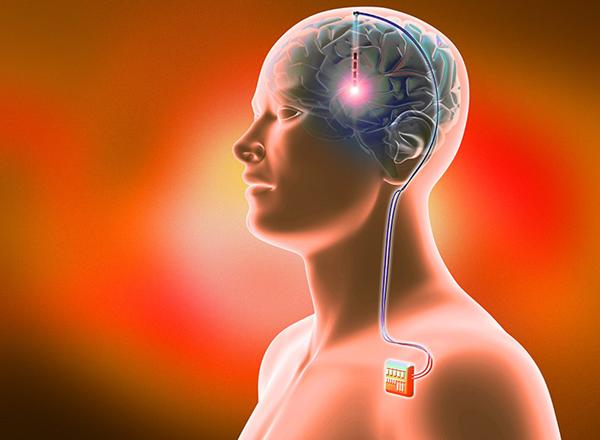You are here
Deep sleep puts the ‘REM’ in remembering
By Los Angeles Times (TNS) - Jun 05,2016 - Last updated at Jun 05,2016

Photo courtesy of wordpress.com
When it comes to mental health and cognitive function, the importance of rapid eye-movement (REM) sleep — that deep, restorative stage of sleep that we cycle in and out of throughout the night — is so well established that experiments depriving humans of it would be considered unethical.
But there are still mysteries surrounding the function of REM sleep to be explored, including whether, why and how it plays a key role in memory. In a new study, researchers report they have found a novel way to conduct such research — by using tiny lights embedded in a mouse’s brain to disrupt a single aspect of sleep.
Their research has turned up evidence that, after we experience a day’s worth of interaction with our complex world, uninterrupted REM sleep is key to turning those lessons learned into emotional memories and contextual memories.
While conducted in mice, the new findings flesh out the beginnings of memories that are central to the human experience.
Emotional memories deepen and enrich our lives. But they can also haunt us, to paralysing effect, after a traumatic event. These are our longest lasting memories, probably because memories associated with strong emotions such as fear and nurturance were for so long key to our survival. Contextual memories help us recognise objects, people and places and recall their significance. Consolidating these types of memories is essential to learning and navigating our physical and social worlds.
While researchers have found sleep and memory formation to be deeply intertwined, the exact phases of sleep in which that’s happening aren’t well understood. In the new study, published in the journal Science, researchers used optogenetics, a technique in which chemicals and light are used to switch specific neurons on and off, to peer at the process of memory consolidation during REM sleep in mice.
REM sleep is a tricky feature of mammals’ somnolent world to capture. A little over an hour into our nightly slumber, humans begin slipping in and out of this unique stage of sleep for longer and longer periods of time. To the outside world, it’s marked by rapid twitching of the eyes under our lids, a near-total loss of voluntary muscle movement and apparent vivid dreaming.
But inside the brain, the coming and going of REM sleep is marked by more subtle changes: in the hippocampus, amygdala and neocortex — regions of the brain that are central to learning, emotions and memory — certain neurons begin to hum in a synchronous, distinct pattern. This so-called theta rhythm has long been suspected to foster the process of consolidating certain memories.
To find out whether that’s so, researchers at Canada’s McGill University and Switzerland’s Inselspital University Hospital used optogenetics to disrupt the hum of theta rhythm in the brains of sleeping mice, without waking them up.
They focused on a group of neurons in the brain’s medial septum that serve as a “pacing” mechanism to start and stop the theta rhythm in the hippocampus during REM sleep. By selectively switching those neurons to the “off” position, they let the mice sleep, but prevented their brains from entering into REM sleep.
Then they watched how the mice’s lack of REM sleep affected their memory.
In mice, laying down emotional and contextual memories is a simpler, more survival-oriented matter.
In a lab, researchers measure a mouse’s successful consolidation of an emotional memory by giving it a foot-shock when it steps on a specific spot, and then watching to see if the mouse — having committed its fright and dread of another shock to memory — goes on to avoid that spot.
Researchers use a mouse’s reliable impulse to explore a new object, or a familiar object in a new spot, to test whether a contextual memory has been formed. If a mouse fails to favour a novel or newly positioned object over a familiar one for exploration, it’s assumed he has failed to make a contextual memory.
Sure enough, mice deprived of REM sleep, while well rested, were less likely than undisturbed mice to have formed memories of conditioning experiments they underwent before sleep. They were less likely to avoid the place they were shocked and unlikely to evince any memory of having seen one of two objects before.
The approach used by the researchers to explore how REM sleep affects certain kinds of memory, marked a “radical departure” from past efforts, wrote Dr Bernat Koksis, a professor of psychiatry and a sleep researcher at Harvard University Medical School. Optogenetics allows a much finer look at the complex process at work than do sleep-deprivation studies or population-based studies that draw broad associations, he suggested.
The researchers have shown a link between REM sleep and emotional and contextual memories, Koksis wrote. But the mechanism at work, the hippocampal theta rhythm, may be at work in other processes, too, not all of them connected to sleep, he added.
A better understanding of theta activity in our brains while we’re awake might find that the unique brain state explored by the researchers here is also at work in spatial navigation, as we physically or mentally travel our world, Koksis wrote.
Related Articles
Young blood may hold the long-sought cure for the decline of the ageing brain, according to research which showed injections of juvenile mouse blood boosting learning and memory in older rodents, scientists said Sunday.
A surprising side effect of a therapy for obsessive-compulsive disorder may lead to a new approach to treating Type 2 diabetes — and offer n
WASHINGTON — It’s well known that getting a good night’s sleep becomes more difficult as we age, but the underlying biology for why this happens has remained poorly understood.













